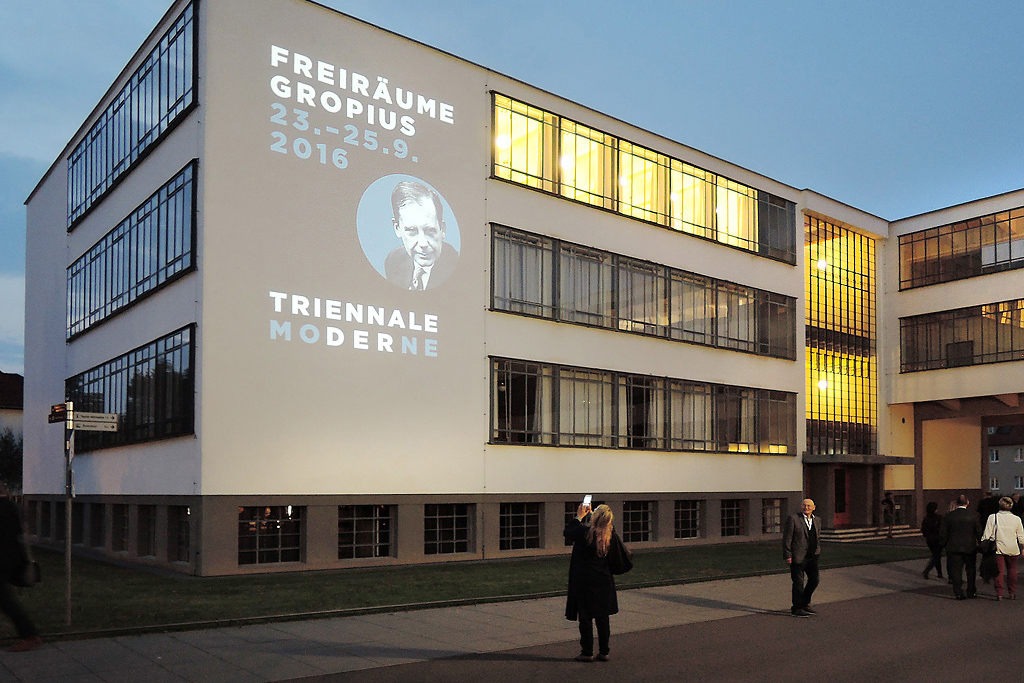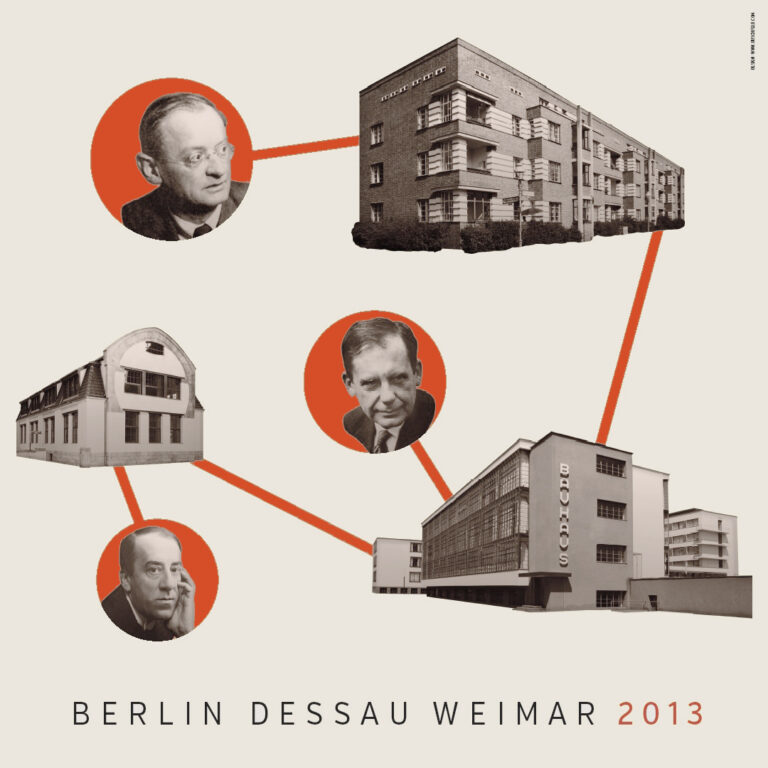Archive and review
Event years 2013 / 2016 / 2019
The Triennial of the Modernism was born in 2013 from a cooperation between the cities of Berlin, Dessau and Weimar. Since then, the cultural, architectural and ideological heritage of the era has been brought into the focus of the general public in a three-year rhythm. In each case, a cross-city motto is determined in advance, which can also take into account special anniversaries or theme years. Here you can find a review of the event years 2013, 2016 and 2019.

2019: 100 years of Bauhaus
Overall coordination: Weimar
After successful performances in 2013 and 2016, the 2019 programme focused on the 100th anniversary of the famous design school, which was based in Weimar, Dessau and Berlin before it was forced to close in 1933 under pressure from the National Socialists. To this day, the Bauhaus is considered the epitome of timeless modern design. It marked trends, revolutionised design education and left behind a cultural legacy that has had an international impact.
This heritage could be experienced in a concentrated way with tours, events and exhibitions. Triennial 2019 opened at the Bauhaus founding site in Weimar, where the focus was on several concerts, the model house Am Horn, which has been restored to its original form and materiality, and the newly opened, centrally located bauhaus museum weimar.
The associated partner city in 2019 was Tel Aviv. In keeping with this, the project The Matter of Data related the migration history of the architecture of the so-called BauhausModernism to the export of materials and components from Germany to Palestine in the 1930s.
At the final conference in Berlin, a joint evaluation took place in which all three participants voted for a continuation of the successfully established format and decided to further expand the network.
Link to the programme archive
- Triennial-der-moderne.de/2019/
[Note: Page opens in new tab*]

2016: 90 years of Bauhaus buildings in Dessau
Overall coordination: Dessau
2016, was held under the motto You must go there...* - 90 years of Bauhaus buildings in Dessau. With the completion of the Bauhaus buildings designed by Walter Gropius and the opening of the Hochschule für Gestaltung in 1926, Dessau became an international pilgrimage site for modern architecture. Seventy years later, the Bauhaus sites in Weimar and Dessau were jointly declared a UNESCO World Heritage Site in 1996.
The 2016 programme provided an opportunity to discover the lesser-known Bauhaus buildings and to understand from them how Gropius and other representatives of the Bauhaus, parallel and subsequent stages of development of Modernism attached great importance to the quality of open spaces as an element of urban design.
A special accent within the framework of the opening in Dessau was set by the opening of the exhibition Simultanität der Modernism. The Van Nelle Factory in Rotterdam and the Bauhaus in Dessau. The exhibition was designed as a reciprocal programme of visits to two UNESCO World Heritage Sites on the architecture of Modernism , both of which were celebrating their ninetieth anniversaries this year. This cooperation established the tradition of the associated Triennial partner cities.
Link to the programme archive
- Triennial-der-moderne.de/2016/
[Note: Page opens in new tab*]

2013: Destroyed diversity
Overall coordination: Berlin
2013, the inaugural year of the Triennial of the Modernism marked the 80th anniversary of the National Socialists' seizure of power in Germany. This provided the occasion for the Berlin theme and remembrance year Destroyed Diversity - Berlin 1933-1938-1945 and invited visitors to discover the historical sites of cultural, intellectual and urban life in Berlin in the 1920s and early 1930s.
The programme of Triennial was also designed to match this: 1933 was also a fateful year for modern art and architecture. It was the year in which the Bauhaus finally closed after its last move from Dessau to Berlin in 1932 and is generally regarded as the end of the short but influential phase of "Neues Bauen".
As the political centre of Germany, Berlin became the main scene of sharp cultural and political conflicts. Many intellectual thinkers and representatives of the Modernism from Germany were directly affected by the change of political mood, lost their commissions and decided to emigrate, among them Bruno Taut, Walter Gropius, Mies van der Rohe, Erich Mendelsohn and many more.
Link to the programme archive
- Triennial-der-moderne.de/2013/
[Note: Page opens in new tab*]

[Technical note: Due to changes within the technology of the web editing system used, there may be errors in the layout display on individual archive pages. An automatically generated translation into English exists only since 2022.
